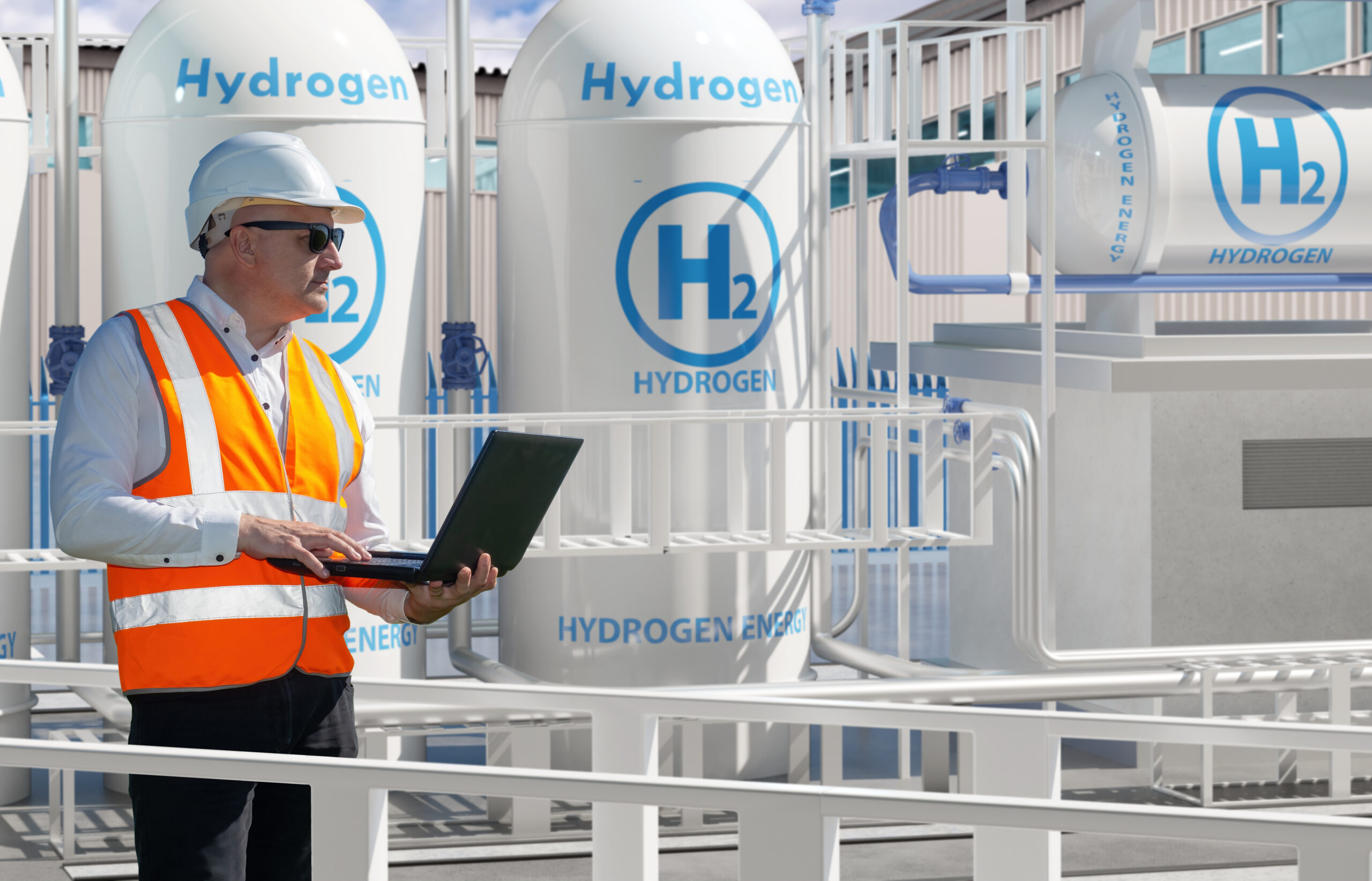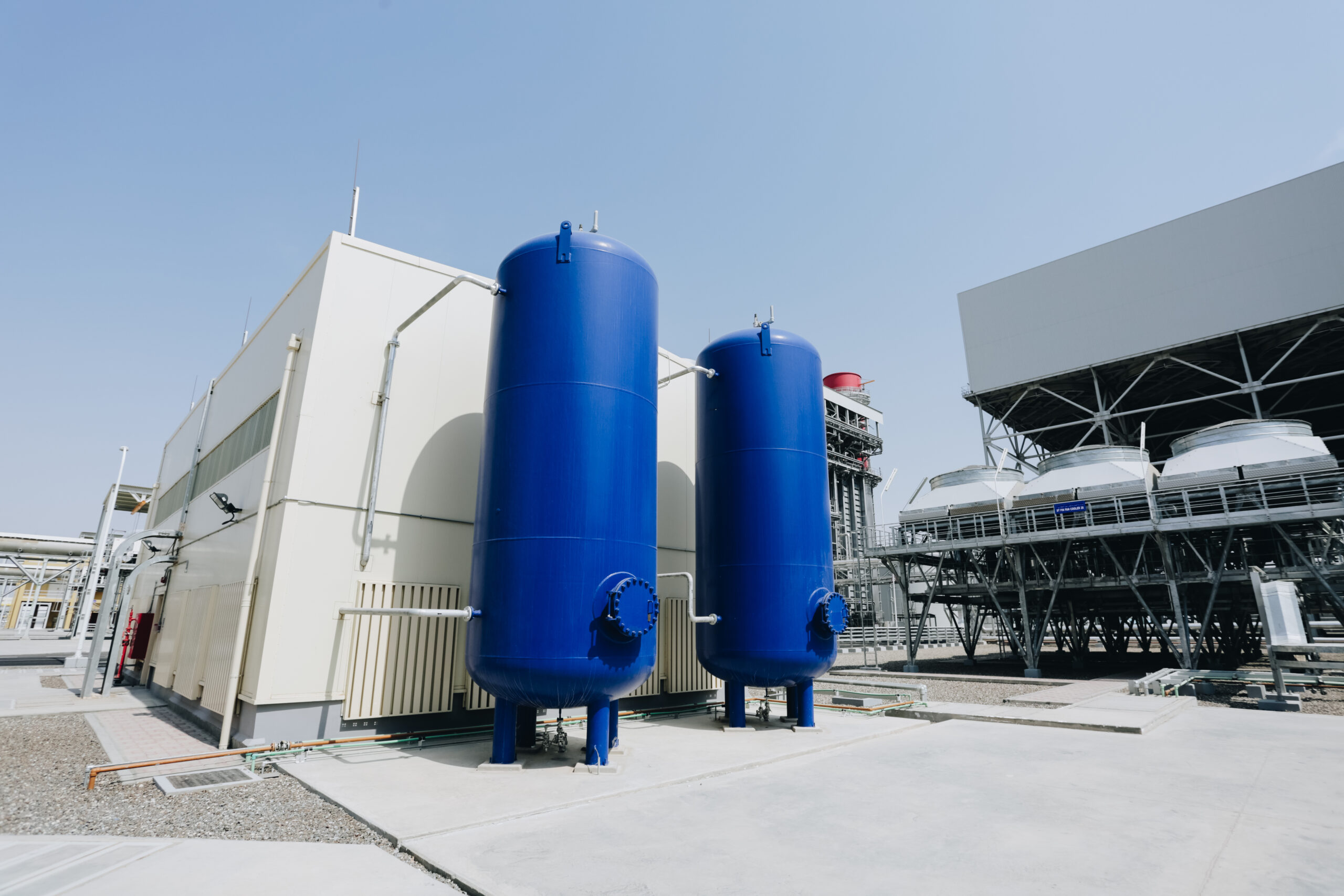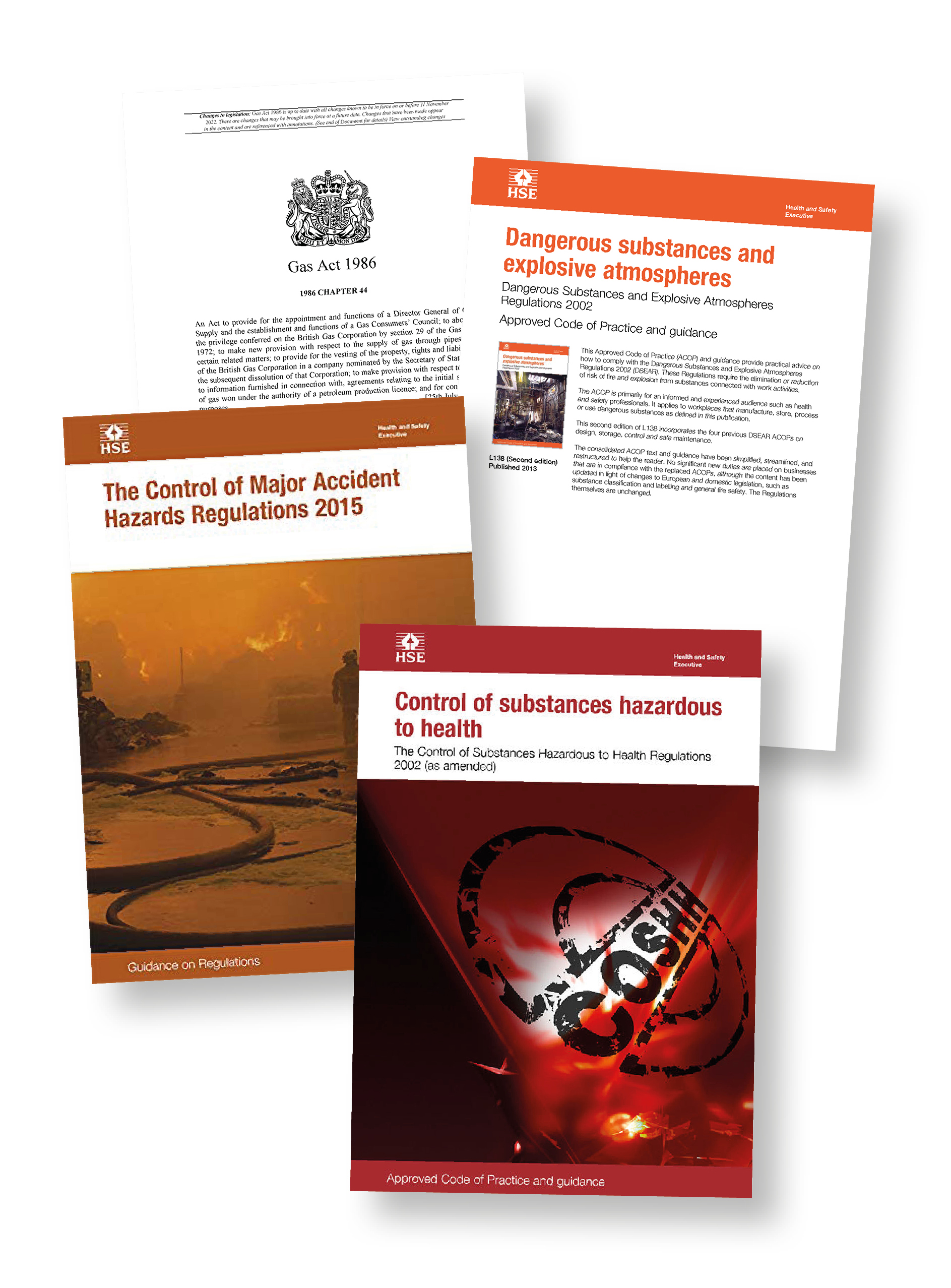Hydrogen safety
About hydrogen
Hydrogen is the simplest and most abundant element in the universe, and although we are currently seeing a rapid growth within this industry, the use of hydrogen is not new. The UK, which is a leader in the hydrogen market, has been producing and distributing hydrogen for over a century. Currently, more than 70 million tonnes of hydrogen are produced globally each year, the majority made from fossil fuels.
Green hydrogen is produced by splitting water into hydrogen and oxygen using renewable energy. The use of renewable energy is key, as this ensures the production process has a very low carbon footprint. Hydrogen is colourless, odourless and non-toxic. When the hydrogen is used, it turns back to liquid water or water vapour. This means that it does not have many of the safety and environmental concerns of petrol, diesel or conventional natural gas.
It is anticipated that green hydrogen will play a key role in transitioning away from fossil fuels; it can be used to store energy to fuel vehicles such as buses and heavy goods vehicles (HGVs) as well as trains, planes and ships, and as a feedstock in industrial applications.
Green hydrogen projects are now a feature of many cities across the world and the UK government intends for 10 gigawatts (GW) of low carbon hydrogen power to be in production by 2030. Hydrogen refuelling stations operate widely in the UK, from London up to Scotland, with the first operational in 2017. Many more production and refuelling facilities are scheduled to be operational in the 2020s.
Fleets of hydrogen vehicles (such as buses) are already operating in cities such as Aberdeen, Birmingham and London.
Prof. Jianzhong Wu, Professor of Multi-Vector Energy Systems and Head of Cardiff University’s School of Engineering, said:
“The Cardiff School of Engineering has investigated the topic of hydrogen energy and multi-vector energy systems for more than 15 years and has been leading and contributing to several flagship projects on these topics.
Hydrogen is a clean and efficient source of energy that can play a significant role in reducing carbon emissions and mitigating the effects of climate change. The UK Government has set out high expectations for the role of hydrogen in its future energy plans.
I would also like to emphasise that properly designed and engineered hydrogen projects can be safe and reliable. With the right safety measures in place, the risk associated with hydrogen can be minimised. As an energy researcher, I can attest that hydrogen has been safely used in various industrial applications for many years, and with proper design, training and precautions, hydrogen can be produced, stored, transported and utilised safely.”
Safety requirements
Hydrogen, in line with hydrocarbons such as petrol and natural gas, is covered by international codes, regulations and standards to ensure its safe production, storage, transportation and use. It has been used within the UK for a range of industrial purposes for decades, and the UK has a strong track record in the safe distribution and storage of combustion gases.
Hydrogen is captured under the definition of “gas” in the Gas Act 1986 and is regulated as part of the gas network. All the components and processes used in creating and operating the refuelling and production facility will comply with the required British Safety Standards. There is more information in the standards and codes annex: HyBont Part IV Schedule 23 Standards.pdf (PDF 227KB)
Hydrogen, like other gases is heavily regulated from a health and safety perspective. The Health and Safety Executive (HSE) requires compliance with the following regulations:
- Storage of Hydrogen is regulated by The Planning (Hazardous Substances) Regulations 2015 and/or the Control of Major Accident Hazards Regulations 2015 (COMAH), depending on the quantities involved. COMAH sets a high bar of requiring operators to take all measures necessary to prevent a major accident and limit consequences for human health and the environment. The operator must have in place various strategies, including safety plans, emergency plans and a Major Accident Prevention Policy.
COMAH applies to facilities that store hazardous substances above specified thresholds. Two tiers of facility are identified, Lower and Upper Tier, with Upper Tier sites being considered higher risk and are subject to a higher degree of regulation. For hydrogen the thresholds for COMAH are:
• Lower Tier – 5 tonnes
• Upper Tier – 50 tonnes
The facility will be designed to provide 3 days of storage to allow for intermittency of renewable power and variations in hydrogen demand. The total quantity of hydrogen stored and present within the process will be less than 5 tonnes and therefore it is expected that the facility will fall below the Lower Tier requirements.
- Under the Hazardous Substances Regulations, consent is required to store 2 or more tonnes of hydrogen, and a further consent is required where 5 or more tonnes of hydrogen will be stored.
- The Dangerous Substances and Explosive Atmosphere Regulations 2002 sets out requirements for the use of equipment and protective systems in potentially hazardous environments, including those where hydrogen is produced or stored.
Safety in design
The facility at Brynmenyn is a small-scale hydrogen production site, similar in scale to a petrol station and other hydrogen production facilities operating in urban environments in the UK and Europe (including Tyseley in Birmingham and Puertollano, Spain) with no reported safety incidents.
The facility is not a major industrial facility and will have the same stringent safety measures applied to it as sites such as petrol stations. A range of measures have been incorporated into the safety-led design.
Facility design:
Safety is of paramount importance and will be built into the design of the HyBont green hydrogen project. To ensure the safety of the design, industry recognised safety reviews will be carried out throughout the facility design and construction including, as a minimum:
- Hazard Identification Review (HAZID): conducted early in the project and throughout design, construction and operation, HAZIDs identify any potential hazards (including consequence assessment) and appropriate mitigation measures. The first HAZID was completed in September 2022.
- Hazard & Operability Review (HAZOP): this is a structured and systematic examination of the entire facility and its operation to identify and evaluate potential safety risks and identify required safeguards. The HAZOP will be completed when the Engineering, Procurement and Construction (EPC) Contractor has been appointed and while the detailed design is carried out.
- Quantitative Risk Assessment (QRA): similar to the HAZOP Review, the QRA provides numerical (quantitative) estimates to understand risk exposure to people (operatives and public) and the environment. It will be completed when the EPC Contractor has been appointed.
- Layer of Protection (LoPA) Review: this review will consider all safeguards identified during the HAZOP Review to ensure their effectiveness. The LoPA Review will evaluate plant hazards in order to reduce the frequency and/or consequence severity of hazardous events, and will be completed when the EPC Contractor has been appointed.
- Safety Integrity Level (SIL): these studies are a formal method of assessing the probability that a functional safety system will not fail when it is needed, and will be completed when the EPC Contractor has been appointed.
Each of these activities ensures that safety is at the forefront of all considerations in the design, construction and operation of the facility, with risks identified and eliminated where possible and appropriate safeguards put in place for residual risks.
There are a wide range of safety measures incorporated into the design of the different components of the green hydrogen production and refuelling facility to prevent hydrogen leaks and potential ignition. This includes:
- Production and storage areas being only accessible to trained staff, as well as systematic maintenance checks following approved methods. This is key to eliminating potential ignition sources, such as flames or sparks.
- The plant control system will be designed to ensure abnormal conditions and malfunctions are detected and appropriate automatic controls will safely shut down the plant, if needed to prevent an accident. For example, early warning systems and alarms as well as the use of fire and gas leak detection systems, safety relief valves, isolation valves and hydrogen and oxygen vents to dispel gas safely.
- Safe construction practices to avoid potential risks. For example, to reduce the risk of small hydrogen leaks, the number of mechanical joints on hydrogen pipework will be minimised and any joints that are required will be fully welded where possible – this lowers leak risk compared to mechanical connections e.g. bolted joints. Where welded connections are used, welding will take place in a controlled factory environment or on site by qualified welders in accordance with the applicable design code.
- Regular, proactive, rigorous and systematic maintenance checks (such as equipment calibrations and material quality) will ensure equipment and piping are reliable at all times and can perform safely.
- In the unlikely case of a major hydrogen leak, a range of safety measures will be included, such as escape routes, safety equipment, fire and gas detection systems (suitable for hydrogen) and firefighting systems.
In the event of a leak, hydrogen’s physical properties, such as it diffusing rapidly and having high buoyancy (ability to travel vertically to the sky), can become a significant safety asset when used in the correct process design. In the event of a fire or explosion the above properties, in addition to hydrogen’s low ability to transfer heat, reduce the risks of creating secondary fires.
There are minor differences between the Hydrogen’s Lower Explosive Limit (LEL), which indicates the air/hydrogen mixture that can ignite, and that of propane (LPG) or methane (dry natural gas). In particular, LPG has a lower LEL than Hydrogen whereas natural gas is higher.[1]
Hydrogen has low ignition energy compared to natural gas, which means that even small sparks are capable of igniting hydrogen/air mixtures. This is an important characteristic and will be properly considered in the design and operating procedures for equipment inside the production area. For example, all equipment will be adequately earthed to avoid the build-up of static electricity and operators will be equipped with low static PPE.
Hydrogen is nontoxic, non-poisonous and is not listed as a carcinogen. Hydrogen is not perceived to be more dangerous than any of the gases we currently use widely in our day to day life.
Canopy design:
As hydrogen is the lightest element on earth, in the unlikely event of a leak it would travel upwards and disperse rather than “creeping” along the ground like heavier gases. For this reason, there will not be a building or roof over the storage or production areas. Therefore, in the unlikely event of a leakage, gas will escape upwards into the atmosphere and dissipate.
Canopies over refuelling station forecourt areas will take this into consideration and will be designed to protect the drivers from the elements whilst refilling, in line with normal fuelling stations, to ensure they are not distracted or rushing to return to their vehicles.
Site layout:
- The hydrogen production equipment is located in an area that is not accessible to the public.
- The hydrogen storage tanks will be located a safe distance from the high voltage electrical substation.
- A one-way traffic system is proposed to minimise potential risk of collision.
- There will be an exclusion zone around the refuelling area, with a suitable queuing system implemented.
Please see the Location and Layout Fact Sheet for more information.
Fire walls:
Each of the hydrogen storage tanks and the hydrogen production equipment will be surrounded by fire walls so, in the unlikely event of a fire, the fire will be contained and will not spread to the other storage tanks. The fire walls will act as a physical barrier to protect the hydrogen storage and production areas from external hazards.
Qualified/experienced staff:
To help ensure the highest quality design and build, Marubeni has engaged with the supply chain to identify and select an experienced Engineering Procurement and Construction (EPC) Contractor with a proven track record of developing hydrogen plants of similar scale. The contractually binding design specifications only allow for proven technology and equipment with an extensive record of safe operation to be installed at the site.
Mott MacDonald, as technical advisor to Marubeni Europower, has extensive experience in the design of hydrogen production facilities at locations in the UK and Europe. Mott MacDonald is currently advising the UK government on the safe transition to a hydrogen economy.
All staff working onsite will be fully trained by the EPC contractor to safely operate and perform maintenance activities on the specific equipment installed onsite, in line with regulations and safe practice methods. Operators will be specially trained to handle hydrogen during day to day operations and also during an emergency response such as a leak.
External audits
The UK has a rigorous safety record with the storage and distribution of gases and flammable materials particularly at a commercial/industrial level.
As part of the Pre-Application Consultation and Planning Application process, South Wales Fire and Rescue and the Health and Safety Executive are being consulted.
Prior to the facility becoming operational, independent safety reviews will be completed as required for regulatory bodies and insurers.
The operator of the facility will implement procedures and processes to ensure the ongoing safe operation of the facility. To ensure that these procedures are adhered to, the operator will carry out audits. In addition to this, the Health and Safety Executive, the national regulator for workplace health and safety, will carry out inspections to ensure that standards are adhered to.
[1] LELLPG= 2.1% v/v, LELHydrogen= 4.0% v/v, LELnatural gas= 5.3% v/v
Fact Sheet Download
Publication Date
March 17, 2023
Fact Sheet
Hydrogen safety
PDF Downloads
Hydrogen safety fact sheet (English – PDF 2.1MB)
Hydrogen safety fact sheet (Welsh – PDF 2.2MB)





